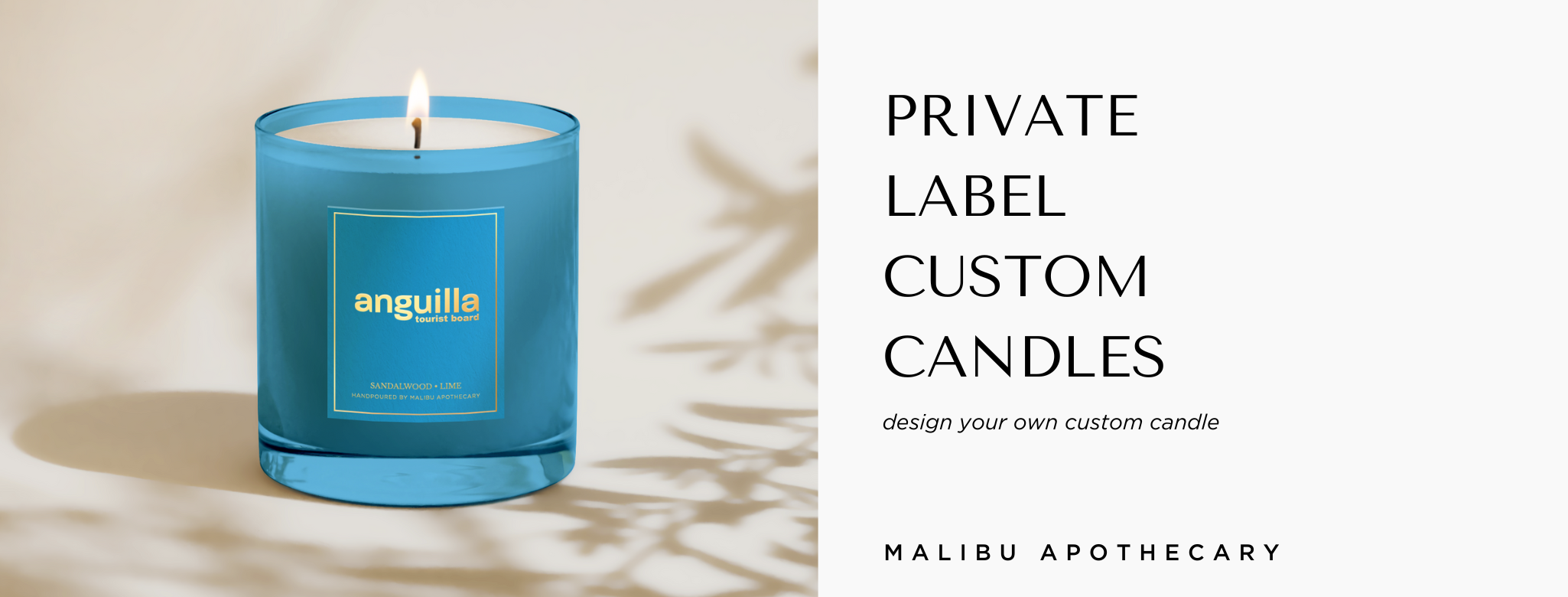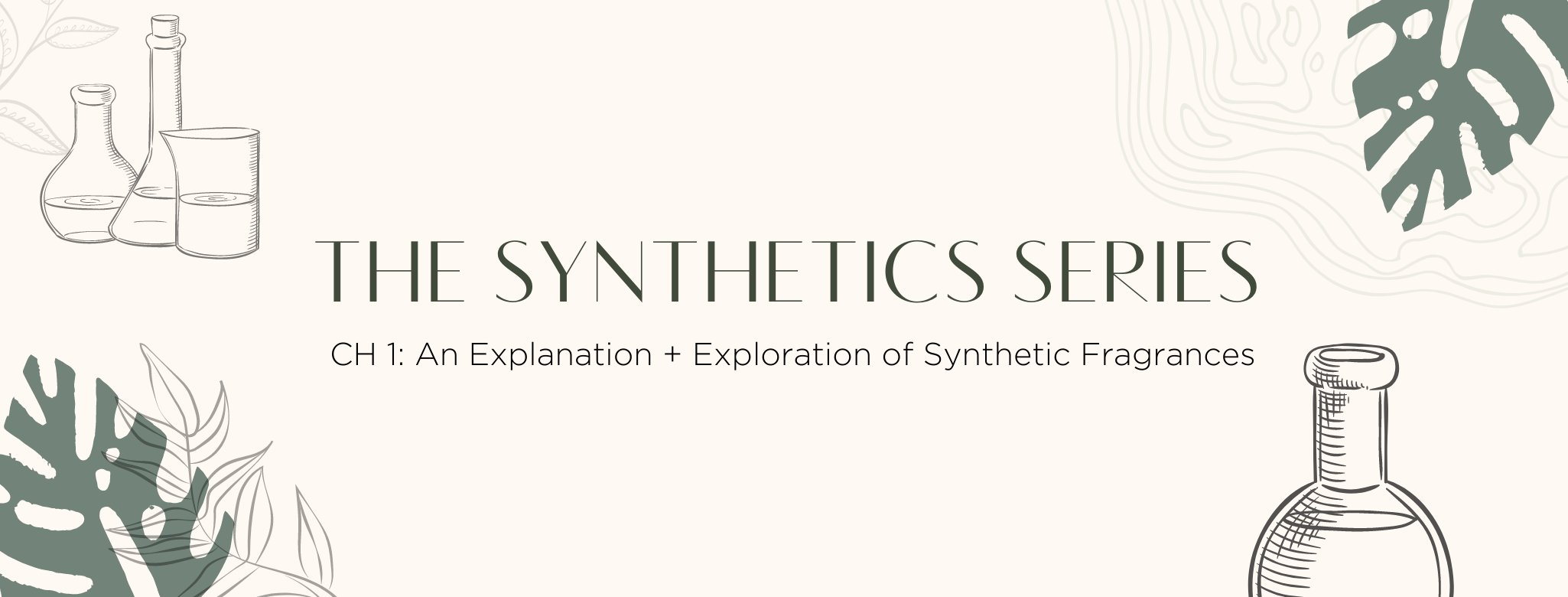
What are Synthetic Fragrances?
Synthetic fragrances contain chemicals that are man-made and not of a natural origin. By contrast, natural fragrances are of natural origin containing only plant based ingredients. Synthetic fragrances are chemically created and usually derived from petroleum or started as a natural and evolved through chemical modification. Not all synthetic fragrances are bad and many fragrances contain a mixture of synthetic scents and essential oils. When you think of fragrance, terms such as phthalates and parabens may come to mind. While these can be found in non-natural fragrances, synthetics can be made without such toxins.
There are many benefits to using synthetic fragrances including scent performance, range of olfactive expression, flexibility, novelty, affordability, complexity, accessibility, longevity, environmental sustainability, and even safety.

The Start of Synthetics: History & Origin Story
Fragrance formulation was revolutionized with the advent of synthetic fragrance notes. Based upon analytic studies of essential oils' composition and structures and a result of chance through organic chemistry research, the 1860s brought about the ability to reproduce molecules artificially. Originally, notes such as musk or vanilla were valued multiples over their now synthetic counterparts. Often, this led to the adulteration of these natural ingredients, with suppliers diluting their oils and cutting them with various substances, creating instability and inconsistency with perfumes. Thus, the advent of synthetics gave us a reliable and accessible way to capture these coveted aromas.

The Democratization of Scent
This synthesis brought about a decrease in production costs resulting in the democratization and accessibility of perfumed products. Especially after the relevant patents of these aromas expired, it allowed reproduction and duplication of once exclusive scents to now become easily accessible for the public. The result? Once only available to the wealthy, these fragrant compounds began to become common and associated with lower quality.
When Synthetics Started to Scare
The fear of synthetics started to sink in when one of the first synthesized fragrance molecules was declared toxic. First presented in 1851, nitrobenzene, was later reported to be toxic 14 years later in 1865. This suspicion around safety, as well as a number of other factors scared off consumers. This includes the heightened xenophobia from the French regarding the Germans during this time. The Germans had a large role to play in the research and development of synthetics and "against the backdrop of the 1870 Franco-Prussian War and the First World War, during which French chemistry suffered enormous human as well as material losses, this [German] reputation caused real harm."
The Birth of the Fragrance House
The emergence of synthetic fragrances eventually led to the era of the perfumer-artist and creation houses we know today. With the complexity required in pairing naturals and synthetics, along with the element of secrecy required for their formulas and composition, so did the convergence of suppliers of raw materials and the perfumer-artists and designers. This created the rise in large fragrance houses including Firmenich, IFF, Mane, Robertet, Guilmard, Takasago, Givaudan, and others.
World of Fragrance Today
Today, competition in the fragrance industry is based on novelty and the ability to innovate and create new synthetic molecules. A costly and lengthy endeavor, this development process typically takes 5 years and costs approximately 2 million dollars. Additionally, these molecules require testing to evaluate their toxicity, biodegradability, stability, and skin sensitization, and effect on allergies, with each country demanding different criteria. The reward for all of this research and development lies in the patents available to these creators. An unidentified molecule has the potential to be patented for its production method and application in perfumery. If it has been identified in another domain or application, it still holds the potential to be protected with its use in perfume.
What are Modern Perfumes Made Of?
A typical perfumer's palette today comprises 70% molecules from fossilized sources, 5% natural ingredients including essential oils and absolutes, and 25% molecules from renewable resources i.e. synthetic molecules from organic waste.
Interested in designing your own clean, bespoke fragrance? Check out our workshops below:
Schedule Appointment
Sources:
Briot, E. (2018, Summer). Natural vs. Synthetic. Nez: The Olfactory Magazine, #05, 84-103.
Read more

Looking to personalize your own candles? From timeless gifts to beautifully branded candles, we can create the custom candle for you. We are your go-to source for private label ready candles.

Imagine this: it’s summer, and you’re finally able to travel after staying put for far too long due to the pandemic. You’re packing for your first vacation in ages, trying to remember what to add t...

Leave a comment
All comments are moderated before being published.
This site is protected by hCaptcha and the hCaptcha Privacy Policy and Terms of Service apply.